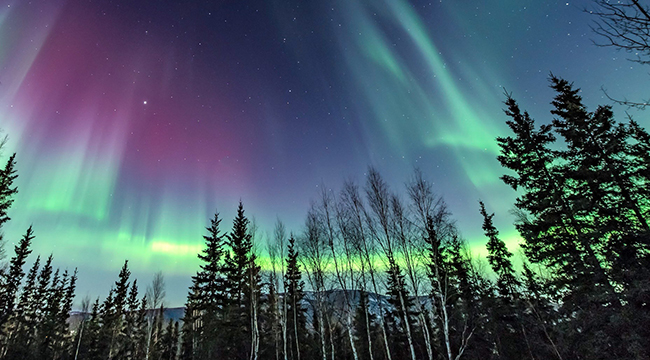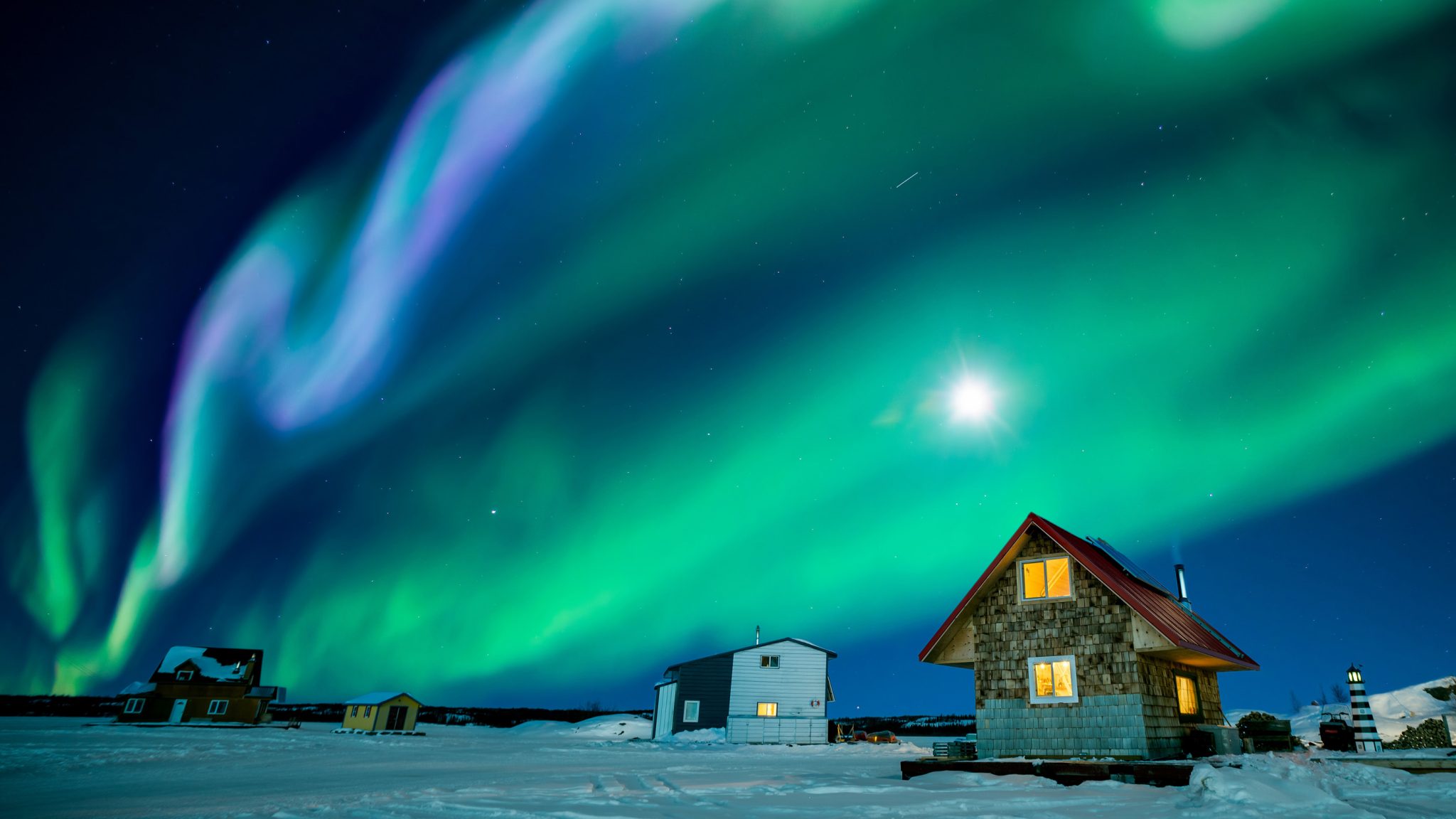

The arrival of a Coronal Mass Ejections (CME) from the Sun can cause the annulus to expand, bringing the aurora to lower latitudes. Auroras usually occur in a band called the annulus (a ring about 1,865 miles across) centred on the magnetic pole. When the magnetic polarity of the solar wind is opposite to the Earth's magnetic field, the two magnetic fields combine allowing these energetic particles to flow into the Earth's magnetic north and south poles. Solar winds are charged particles that stream away from the Sun at speeds of around 1 million miles per hour.


The northern lights occur as a consequence of solar activity and result from collisions of charged particles in the solar wind colliding with molecules in the Earth's upper atmosphere. The lights generally extend from 50 miles to as high as 400 miles above the Earth's surface. The northern lights are best seen in darkness, away from any light pollution. During a weak aurora, the colours are very faint and spread out whereas an intense aurora features greater numbers of and brighter colours which can be seen higher in the sky with a distinct arc. The northern lights (also known as aurora borealis) appear as large areas of colour including pale green, pink, shades of red, yellow, blue and violet in the direction due north. This incredible occurrence can be occasionally seen in the night sky over Britain.


 0 kommentar(er)
0 kommentar(er)
